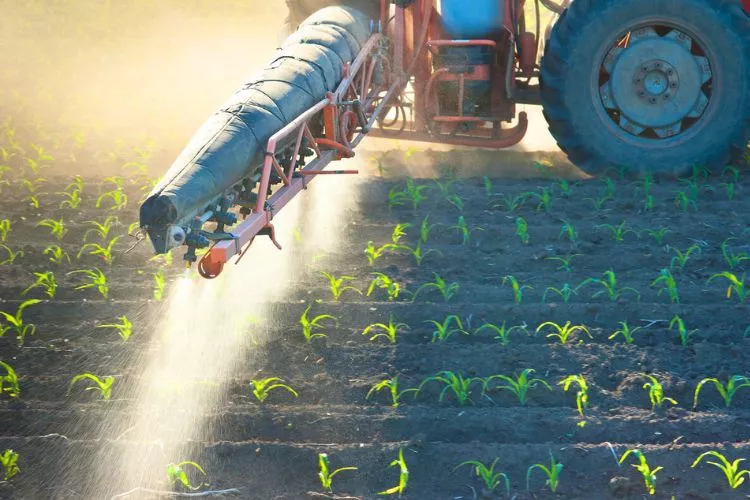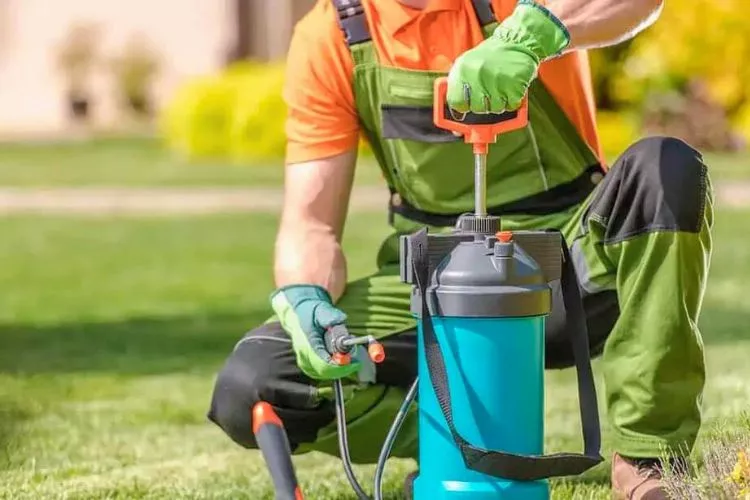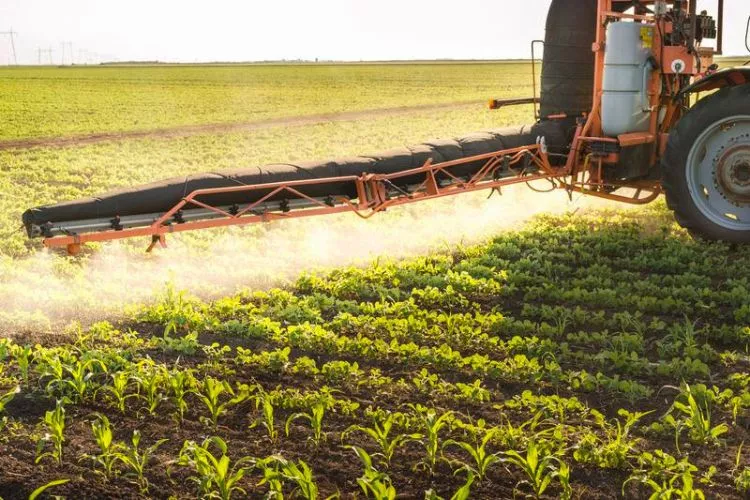Right from the journey of a tiny seed to a full-grown plant, herbicides play a crucial role. Among the bevy of options available, one stands out: Atrazine. But how long does it take for atrazine to work? Let’s dig deeper in the pursuit of answers.
This article will shed light on one of the central aspects of atrazine; its effectiveness over time. In a world seeking instant solutions, understanding the operational speed of this widely-used herbicide is pivotal for farmers and experts alike.

We would be remiss to not mention the swirling debates surrounding the use of atrazine. Is it a silver bullet for weed control or an eco-nightmare in disguise? Stay tuned as we navigate these thickets of controversy, while retaining a realistic outlook on this widely-acclaimed herbicide.
How long does it take for atrazine to work?
Atrazine is a herbicide used to control broadleaf and grassy weeds. The time it takes for atrazine to work depends on several factors, including the weed species, application rate, soil and environmental conditions.
Generally, atrazine inhibits weed growth within 1 to 3 days after application. However, it may take 1 to 3 weeks before visible symptoms appear and weeds begin to die. Newly emerged weeds that are actively growing are most susceptible to atrazine. Perennial and established weeds may take longer to control.
Atrazine remains active for about 6 weeks and can stay in the soil for 3 to 6 months. However, it is recommended to apply atrazine not more than twice a year.
Proper application rate and timing of atrazine is important for effective weed control. The recommended application rate varies from 1 to 4 pounds of active ingredient per acre depending on the weed species and growth stage. Spring applications, before weed seeds germinate, tend to be most effective.
In summary, atrazine inhibits weeds within a few days of application. Still, visible symptoms and weed death may take 1 to 3 weeks, depending mainly on weed species, growth stage, application rate and environmental conditions. Following label directions and best practices for application can help optimize the speed and effectiveness of atrazine.
Will atrazine kill weeds that are already up?
Yes, Atrazine can kill weeds that are already up. Atrazine acts as a pre-emergent (kills weeds before they sprout) and post-emergent (kills mature weeds) weed control. It effectively deals with common broadleaf weeds like Chickweed, Clover, Henbit, Pigweed, Ragweed, Doveweed, Oxalis, Betony, Gripeweed, Morning Glory, and more.

However, it may not work as well against grasses, sedges, and other certain types of weeds seen in lawns and gardens. It is essential to carefully follow the application instructions for atrazine, as it can harm certain turfgrasses.
What weeds are controlled by atrazine?
Atrazine is an effective herbicide controlling many broadleaf and grassy weeds. Some of the common weeds that atrazine controls include:

- Crabgrass – Atrazine is very effective at controlling crabgrass, especially when applied as a pre-emergent in early spring before crabgrass germinates.
- Foxtails – Both yellow and giant foxtail weeds are susceptible to atrazine.
- Pigweeds – Atrazine applications control both redroot and smooth pigweeds.
- Lambsquarters – Atrazine provides good lambsquarters control when applied at the right rates.
- Morningglories – Both common and ivyleaf morningglories are controlled with atrazine.
- Velvetleaf – Atrazine is effective against velvetleaf weeds, especially when applied as a pre-emergent.
- Purslane – Atrazine can provide good purslane control when used at higher labeled rates.
- Knotweed – Both prostrate and+ [are controlled by atrazine]
In addition to these weeds, atrazine is also effective against other weeds like Barnyardgrass, Big Bluestem, Bluegrama, Buttonweed, Chickweed, Cocklebur, Jimsonweed, Ragweed, various mustard weeds, buckwheat, amaranth, and Spanish needle.
Does atrazine need to be watered in?
Yes, Atrazine does need to be watered in for its effective application. Atrazine should be applied when the ground is dry, and rain or water within 2 or 3 days of application may decrease its effectiveness on emerged weeds.
It is also important not to apply atrazine during rain or when a storm event, likely to produce runoff from the treated area, is forecasted to occur within 48 hours following application.
However, before applying it to the weedy area, you typically mix the herbicide with water in a clean container, such as a spray tank or bottle.
You May Also Find Useful: Simazine vs Atrazine | How To Kill Orchard Grass In Your Lawn
Frequently Asked Questions (FAQs)
Will atrazine kill crabgrass?
Yes, Atrazine is an effective herbicide for controlling crabgrass. It can be used as both a pre-emergent before the crabgrass has sprouted and as a post-emergent when the crabgrass is already present. However, for the herbicide to function effectively, it is crucial to apply it correctly and in the right quantities.
Does atrazine kill clover?
Yes, Atrazine is very effective at controlling clover. As with crabgrass, it can be used as a pre-emergent or post-emergent herbicide. This, however, may vary depending on the specific type of clover. It is advisable to always read the product label for specific instructions on controlling different types of weeds.
Will rain wash away atrazine?
Rain can wash away atrazine if it falls too soon after application. To ensure best results, atrazine should ideally be applied to dry ground, and there should be no rain forecast within 2-3 days of application. This gives the herbicide enough time to penetrate the soil and be absorbed by the plants’ roots.
How much rain does it take to activate atrazine?
Typically, it doesn’t take much rain—around 0.5 inches or “a good soaking”—to activate pre-emergence herbicides like atrazine. The rainfall helps move the herbicide into the soil profile where it can get to target weed seeds. However, excessive rainfall after application can lead to runoff and reduce effectiveness.
What is the best temperature to apply atrazine?
Atrazine can be applied in various temperatures, anything from 40°F to 90°F. However, the best results are typically obtained when the temperature is between 60°F to 85°F. It is also important that the soil temperature is warm enough for weed germination around 55°-60°F. Always make sure to follow the manufacturer’s instructions for optimal results.
Conclusion:
Atrazine works effectively to control a broad range of weeds. The effectiveness of this herbicide starts to show within 14 to 21 days after application, impacting the weeds’ photosynthesis and ultimately destroying them. Despite its staying power of up to 6 weeks and residual presence in the soil for 3 to 6 months, applying atrazine more than twice a year isn’t recommended. Ultimately, understanding atrazine’s time frame and application methods is crucial to achieving the best results in weed management. I hope, I have been able to clear your confusion regarding how long does it take for atrazine to work.


